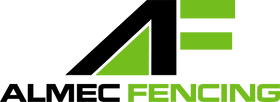Navigating Industrial Fencing Regulations: What You Need to Know
When it comes to installing industrial fencing, compliance with regulations is paramount. Ensuring your fencing solution meets all legal and safety requirements not only protects your investment but also guarantees the security and functionality of your property. At Almec Fencing, we understand the complexities of these regulations and are here to guide you through the process. Here's what you need to know about navigating industrial fencing regulations.
Understanding Regulatory Bodies and Standards
In the UK, several regulatory bodies oversee fencing standards to ensure safety, security, and environmental compliance. Key among these are:
- British Standards Institution (BSI): The BSI provides guidelines and standards for various fencing types, including specifications for materials, design, and installation practices.
- Construction Skills Certification Scheme (CSCS): Ensures that construction workers have the necessary training and qualifications to safely carry out fencing installations.
- Contractors Health and Safety Assessment Scheme (CHAS): A pre-qualification scheme that assesses a company's health and safety standards.
- Safe Contractor: An accreditation that recognises rigorous health and safety practices in industry-specific operations.
Compliance with these standards ensures that your fencing is safe, durable, and fit for purpose.
Key Regulations and Requirements
-
Planning Permission: In many cases, erecting industrial fencing may require planning permission from your local council. This is particularly true for fencing over a certain height, typically 2 meters. It’s crucial to check with your local planning authority before commencing any installation.
-
Height and Visibility: Regulations often specify maximum heights for different types of fencing. For instance, fences bordering public highways or pedestrian pathways usually have height restrictions to maintain visibility and safety.
-
Material Specifications: The materials used in your fencing must comply with specific standards to ensure they are robust and suitable for their intended environment. For example, Almec Fencing’s Mesh Fencing and Palisade Fencing adhere to stringent quality standards, providing both security and durability.
-
Health and Safety Compliance: All installations must comply with health and safety regulations to protect workers and the public. This includes using CSCS-certified professionals and adhering to CHAS and Safe Contractor standards.
-
Environmental Considerations: Regulations also address environmental impacts, such as noise pollution and wildlife disruption. Acoustic fencing might be necessary in certain areas to mitigate noise, while other types of fencing may need to incorporate wildlife-friendly designs.
-
Security Requirements: High-security installations, like prisons or military facilities, have additional regulations concerning anti-climb features, surveillance compatibility, and overall structural integrity. Almec Fencing’s Max-Defence 358 Mesh Fencing, for example, is designed to meet these stringent requirements.
Steps to Ensure Compliance
-
Conduct a Site Survey: Before any installation, a comprehensive site survey is essential. This helps identify specific regulatory requirements and potential challenges.
-
Consult with Experts: Engage with fencing professionals who are well-versed in local regulations. Almec Fencing’s team of experts can provide valuable insights and ensure that your project adheres to all necessary standards.
-
Get Necessary Approvals: Obtain all required permits and approvals from local authorities. This may involve submitting detailed plans and specifications for review.
-
Choose the Right Products: Select fencing products that are compliant with regulatory standards. Almec Fencing offers a range of products designed to meet diverse regulatory requirements, from general boundary demarcation to high-security installations.
-
Professional Installation: Ensure that your fencing is installed by certified professionals. Almec Fencing’s installation teams are CSCS certified and DBS cleared, ensuring safe and compliant installations.
-
Regular Maintenance and Inspections: Post-installation, regular maintenance and inspections are crucial to ensure ongoing compliance and functionality. This includes checking for damage, wear and tear, and ensuring all safety features are operational.
Almec Fencing's Commitment to Quality and Safety
We operate to the highest standards in terms of health and safety, and our dedication to quality is reflected in our accreditations with leading health and safety bodies and programmes, including CHAS, CSCS, and Safe Contractor. Additionally, we are recognized by several specialist bodies for our work in specific operating environments, including confidential, high-security installations such as prisons and Ministry of Defence (MOD) locations. Our teams are CSCS certified and DBS cleared to carry out fencing works around schools, colleges, universities, care homes, and other institutions for the vulnerable and less able.
By adhering to these rigorous standards and accreditations, we ensure that every installation is performed with the utmost care and professionalism, providing our clients with a secure and compliant fencing solution.
Conclusion
Navigating industrial fencing regulations can be complex, but it’s an essential part of ensuring your fencing solution is effective, safe, and legally compliant. By understanding the key regulations, engaging with knowledgeable professionals, and choosing high-quality, compliant products, you can successfully navigate these requirements. At Almec Fencing, we are committed to helping you achieve a secure and compliant fencing solution tailored to your specific needs. Contact us today to learn more about our range of products and how we can assist with your industrial fencing project

